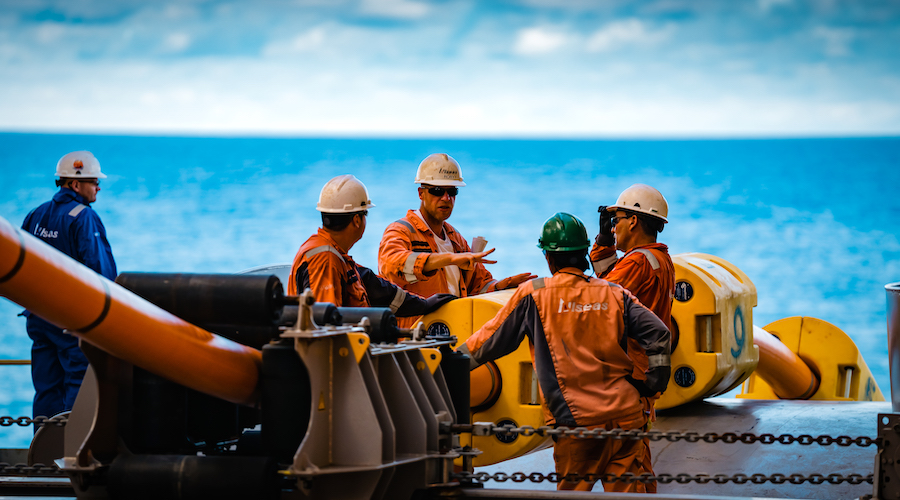The findings follow US President-elect Donald Trump’s recent nomination of Elise Stefanik, to serve as the the country’s ambassador to the United Nations. Stefanik is a vocal supporter of securing critical minerals for local consumption from potato-sized rocks called “polymetallic nodules”.
These nodules lie on the ocean’s floor at depths of 4 to 6 km (2.5 to 4 miles) and are abundant in the CCZ, where Canada’s The Metals Company (NASDAQ: TMC), already has two exploration contracts.
Planet Tracker’s report also comes a day after the International Union for Conservation of Nature (IUCN) warned that over 40% of coral species face extinction as a result of human activities, including fishing activity, especially bottom trawling, deep sea mining, as well as drilling for oil and gas.
The reports and Stefanik’s nomination also come as the International Seabed Authority (ISA) works towards the final version of a Mining Code to govern deep-sea mining, expected to be adopted in 2025.
According to Planet Tracker, even in the most optimistic projections, countries involved in deep sea mining could see an annual corporate income tax revenue of just $6.25 million. For most nations, this contribution is inconsequential when measured against the potential environmental costs, the authors say.
Source: Planet Tracker’s “Race to the Bottom” report.
“Deep sea mining is expected to offer minimal financial returns to ISA Member States,” Emma Amadi, Investment Analyst at Planet Tracker, wrote. “Countries do not own the mineral resources in international waters, and companies can choose sponsorship from any ISA member State, triggering a race to the bottom in corporate income tax rates.”
The report calculates that royalties, another potential source of income for nations, would range from $42,000 to $1.1 million a year — an insignificant figure for all but the smallest economies. It also warns that these royalties could be subject to arbitrary reductions by the ISA, making it unlikely that member states will receive substantial payouts.
Source: Planet Tracker’s “Race to the Bottom” report.
“As the world’s largest economies gear up for responsible deep-sea mining, activists are throwing the whole misinformation kitchen sink at the public. Take Planet Tracker’s latest: speculating on a fixed annual tax revenue is overly simplistic,” a TMC spokesperson told MINING.COM.
The Canadian deep-sea mining company said the NGO’s calculation don’t fully capture the complexities involved in this matter.
TMC highlighted it has conducted a comprehensive SEC-compliant SK-1300 Initial Assessment for its NORI-D project, which includes detailed underlying assumptions regarding project size, project economics, ISA royalty rates, and onshore tax rates.
“This assessment indicates $7 billion in life-of-mine royalties for Nauru and ISA members, along with $9 billion in life-of-mine taxes,” the spokesperson said. “These figures exclude the majority of NORI’s estimated resource.”
Unknown risks
A parallel report by Planet Tracker, Mining for Trouble, highlights the broader economic risks of deep sea mining. The report estimates that countries mining key minerals terrestrially—such as copper, cobalt, nickel and manganese—stand to lose a combined $560 billion in annual export revenues. The potential disruption to these established industries could have far-reaching consequences for global economies.
Previous research talked of up to $500 billion of lost value and damages to the world’s biodiversity. These have been projected to be up to 25 times greater than land-based mining.
On the other side of the equation, there are peer-reviewed studies that show how producing battery metals from nodules could reduce emissions of CO² by 70%-75%, cut land use by 94% and eliminate 100% of solid waste.
Opponents to seafloor mining have long-warned that consequences of both exploration and extraction of minerals from the seabed are unknown and that more research should be conducted before going ahead.
Those that support the expansion of the activity believe deep-sea mining is central to meeting the increasing demand of mineral growth. The demand for copper and rare earth metals is predicted to grow by 40%, according to the International Energy Agency.
The Paris-based organization also expects that the demand share for nickel, cobalt and lithium from clean energy technologies alone will grow by 60%, 70% and 90%, respectively.
This article was published by: Cecilia Jamasmie
Visit the original article here



